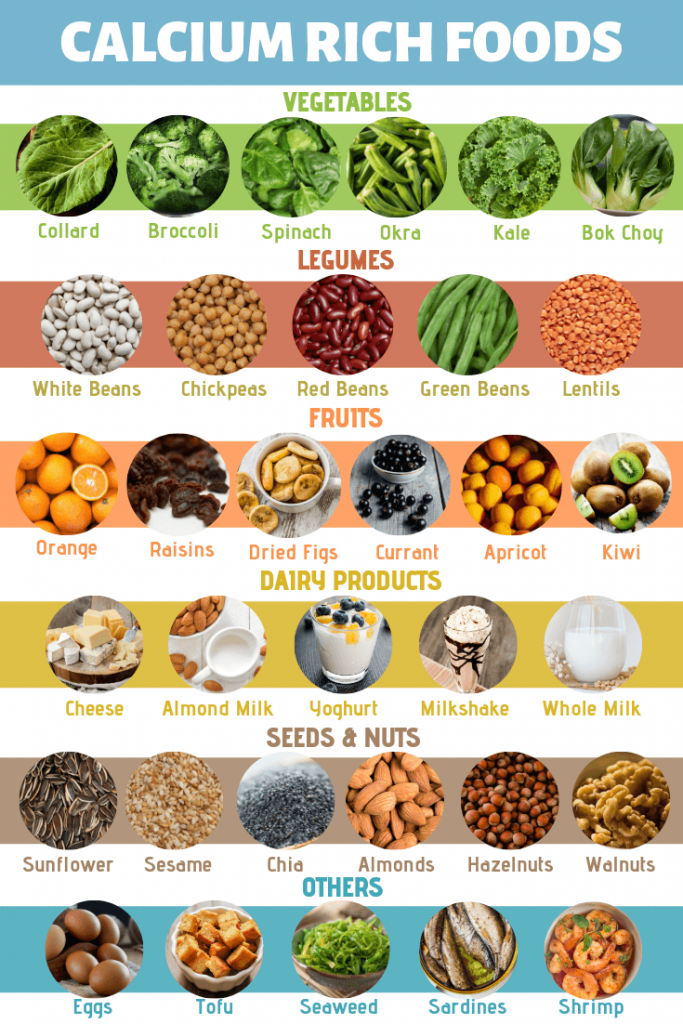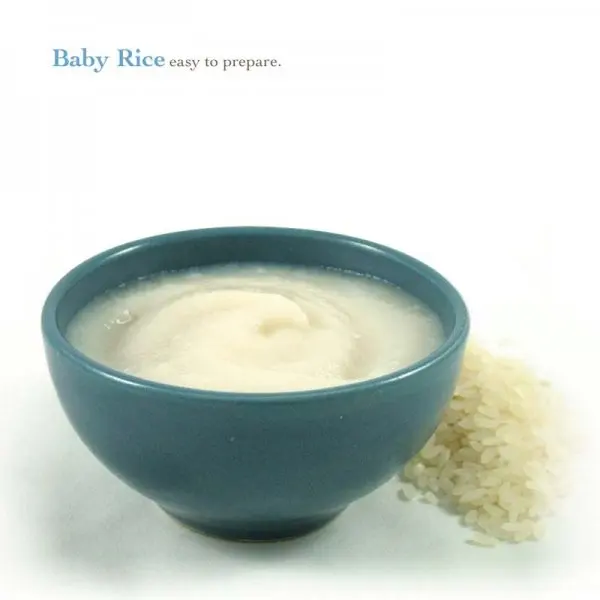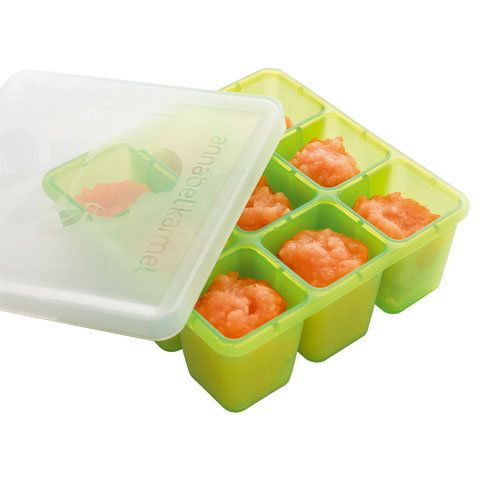Calcium rich foods for babies with milk allergy
Non-Dairy Calcium-Rich Foods for Babies
How can your baby get enough calcium on a plant-based diet? Don’t worry – there are plenty of options for dairy-free kids. We’ve got you covered in this post.
You hear about the importance of calcium all the time – usually by way of milk and dairy advertisements – so how can your baby get enough of this mineral on a plant-based diet?
Fortunately, dairy is far from the only source of calcium! It’s just that non-dairy sources aren’t advertised so much.
Let’s cover a few basics of calcium and some great non-dairy sources for your baby.
Why is calcium important?
All but 1% of the calcium in the human body is stored in the teeth and skeleton.
It makes sense then, why calcium is an essential mineral for all ages and stages. It’s always flowing to and from the bones and needs to be adequately replenished.
In infancy, calcium plays a particularly large role in proper bone formation and skeletal development. Calcium absorption is high during infancy, and is passively facilitated by the lactose in breast milk or formula.
Beyond bone health, calcium is necessary for allowing your muscles to contract, your heart to beat, and your blood to clot. It does a lot of things for your baby!
We’re sure you’re not surprised to hear from us that you don’t have to give your baby cow’s milk after 12 months if you don’t want to, especially if the main reason is for calcium.
Cow’s milk may not even be the best source of calcium out there. In fact, research shows that consuming too much cow’s milk can actually increase your baby’s risk for iron deficiency, type 1 diabetes, and can be tough on little kidneys.
How much calcium do babies need?
For infants up to six months old, the RDA for calcium is 200 mg per day for both males and females. At this age, your baby will get his or her calcium needs met through breast milk or formula.
At six months, their calcium needs increase to 260 mg until they reach one year old, and then to 700 mg from ages one to three.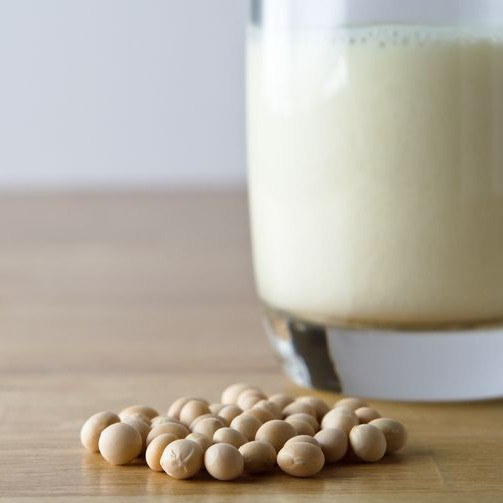 This is an important time to be introducing calcium-rich foods regularly.
This is an important time to be introducing calcium-rich foods regularly.
Understanding the recommended amounts is good, but what does this amount of calcium look like? Here are a few examples:
8 ounces (1 cup) of calcium-fortified soy milk = 300 mg
1 cup cooked kale = 100 mg
1 Tbsp blackstrap molasses = 100 mg
1 slice white bread = 75 mg
½ cup kidney beans = 40 mg
1 Tbsp almond butter = 55 mg
15 non-dairy calcium-rich foods for babies
Below are some of the best non-dairy sources of calcium for babies.
Remember to prepare these in an age-appropriate way for your baby (do not feed your baby whole nuts, raw produce, or other choking hazards before they are ready).
This may mean boiling or steaming, blending or pureeing, roasting until soft, and cutting into bite-sized pieces.
- Calcium-set tofu
- Almond butter
- Calcium-fortified plant milks
- Turnip greens
- Calcium-fortified orange juice (should not be introduced until after 12 months)
- Bok choy
- Corn or flour tortillas
- Broccoli
- Oranges
- White and whole wheat breads
- Chia seeds
- Beans and lentils
- Amaranth
- Figs
- Blackstrap molasses
Some calcium-rich plant foods, such as spinach, Swiss chard, and rhubarb, contain compounds called oxalates, which inhibit some of their calcium from being absorbed.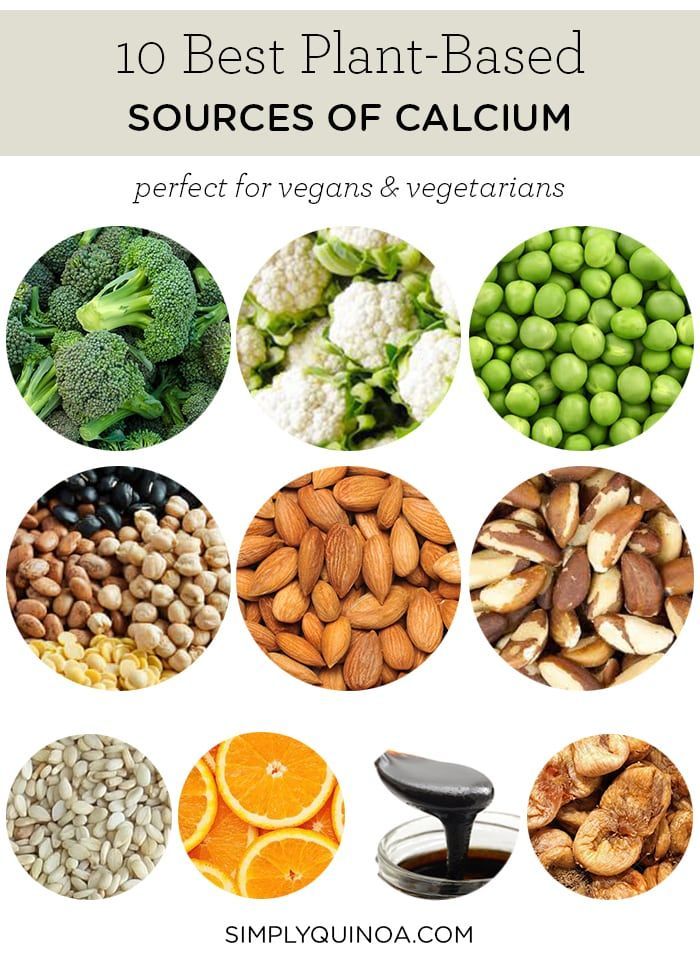
Even though these foods shouldn’t be solely relied upon for their calcium content, they’re still excellent sources of other nutrients that are healthy. Just be sure to incorporate enough other calcium-rich, low-oxalate foods in your baby’s diet.
And if your babe isn’t into all the foods all the time, many parents choose to use a multivitamin during times of selective eating. Many children’s multivitamins don’t contain calcium, so be sure to read the nutrition panel if this is a nutrient of concern.
Either way, rest assured that your baby can get enough calcium without dairy if that’s what you choose!
If you liked this post, we think you might enjoy these too:
Plant Sources of Iron for Babies
DHA Needs During Pregnancy
Calcium in Plant-Based Pregnancy
Calcium Needs For Children With Cow's Milk Allergy
Calcium Needs For Children With Cow's Milk Allergy
Is your child getting enough calcium? If your child has to avoid dairy products for their cow's milk allergy, make sure they are eating enough other foods containing calcium.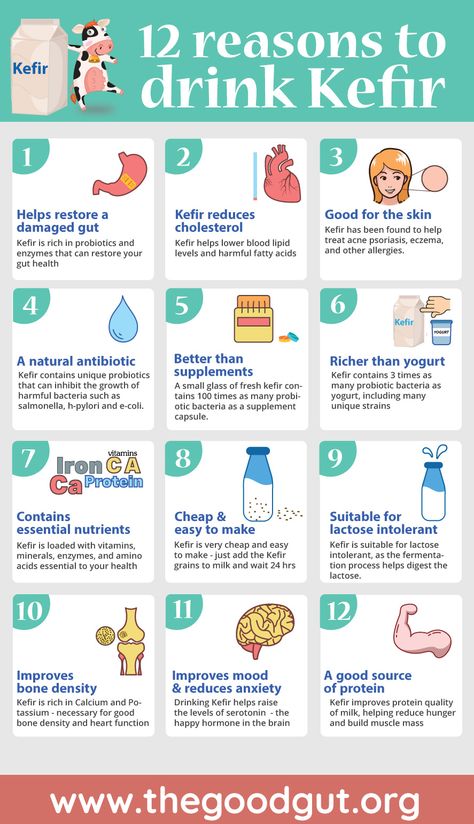
See our top tips on how to include calcium foods.
How much calcium does my child need each day?
Dairy products provide most people with their main source of calcium. If your child has to avoid dairy products because they are allergic to cow's milk, make sure they are eating enough other foods containing calcium to meet their daily needs.
| Age | mg/day |
| 1-3 | 500 |
| 4-8 | 700 |
| 9-11 | 1000 |
| 12-18 | 1300 |
What dairy-free foods have calcium?
| Alternative milks | Calcium (mg) |
| Soy, rice, oat, almond milks, fortified with calcium, 100mls | 120 |
| Alternative dairy products | |
| Angel Foods cheddar, 30g | 98 |
| Kingland soy yoghurt, 100g | 50 |
| Alpro soy dessert, 125g | 150 |
| Alpro soy custard, 100mls | 120 |
| Tofu (soy bean curd), 1 cup | 275 |
| Cereals | |
| Light 'n' Tasty, 1 cup | 400 |
| Special K, 1 cup | 320 |
| Nutrigrain, 1 cup | 110 |
| Egg, 1 large | 35 |
| Fish & shellfish | |
| Salmon, canned in spring water, 100g (including the bones) | 270 |
| Sardines, 50g canned | 250 |
| Green mussels, steamed, x 1 | 14 |
| Fruit | |
| Dried figs, x 2 | 64 |
| Fresh fruit, 1 average serve | 20 |
| Rhubarb, 1 cup | 230 |
| Legumes | |
| Baked beans, ½ cup | 50 |
| Cannellini beans, canned, ¼ cup | 28 |
| Seeds | |
| Poppy seeds, 1 teaspoon | 43 |
| Sesame seeds, 2 tablespoons | 168 |
| Tahini, 2 tablespoons | 106 |
| Tree Nuts | |
| Almonds, raw, 10 | 34 |
| Vegetables | |
| Broccoli, boiled, 1 cup | 52 |
| Rocket leaves, 1 cup | 75 |
| Silverbeet, boiled, 1 cup | 39 |
| Spinach, boiled, 1 cup | 130 |
Should my child have a calcium supplement?
Your child may need a calcium supplement if they are only getting 50 percent or less of their calcium needs due to a lack of calcium-rich foods.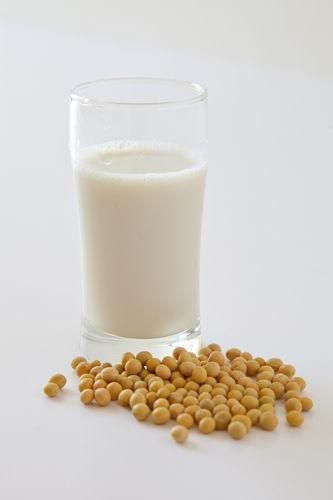 You can buy a calcium supplement, or your doctor can prescribe one. Give your child a calcium supplement with meals.
You can buy a calcium supplement, or your doctor can prescribe one. Give your child a calcium supplement with meals.
A multivitamin and mineral supplement will not provide enough calcium. You will need to give your child a separate calcium supplement. There are many options available and you can buy them online, at the supermarket, health shop or at your local pharmacy.
If you are buying a supplement, check the supplement is dairy-free, or free of any other ingredients your child may be allergic to. Ask your family doctor to refer you to a dietitian. A dietitian will check how much calcium your child is currently getting in food. They will give you advice about how much extra calcium your child will need.
References
The Concise NZ Food Composition Tables, 12th edition, 2016.
Acknowledgements
The content on this page has been developed and approved by the National Child and Youth Allergy Clinical Network, Paediatric Society New Zealand.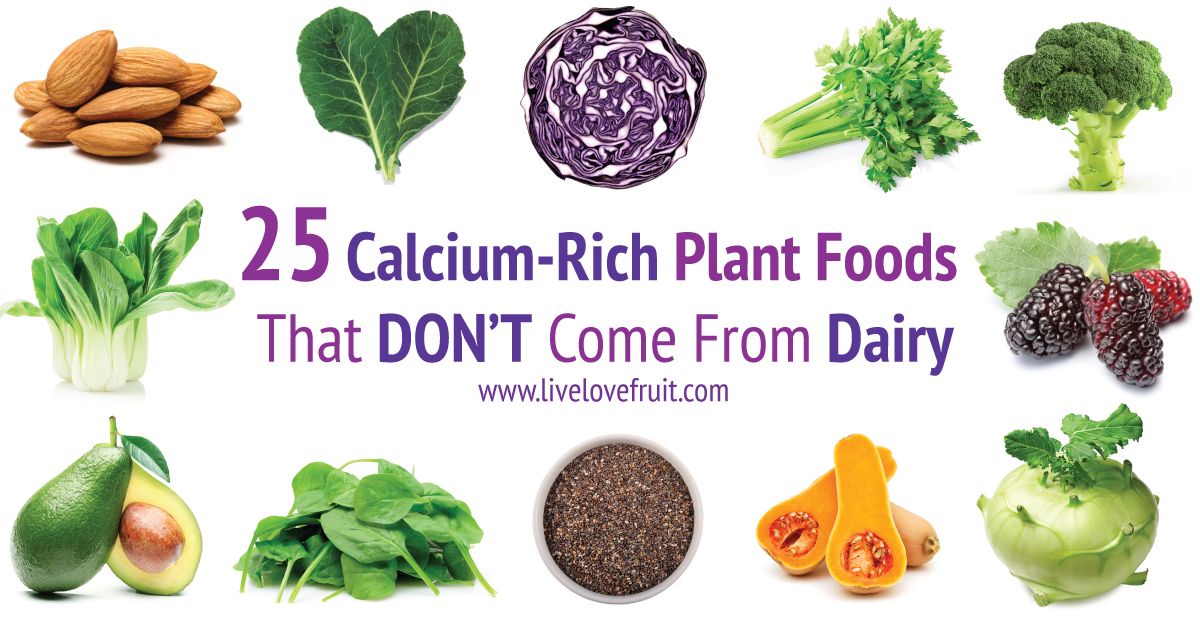
Tags
Allergy
This page last reviewed 17 February 2019.
Calcium-rich foods for children from 1 year old,
“It grows by leaps and bounds” - this well-known Russian proverb reflects the intensity of the growth and development of babies. Indeed, on average, the increase in the length of a baby in the first year of life is 20–25 cm, and there will never be such impressive results in the future. For the harmonious development and normal operation of all the organs and systems of the baby, a constant supply of nutrients is required - the "bricks" that make up the body.
Calcium is our backbone
The inclusion of the mineral in the bones of a child begins in utero, mainly in the last trimester of pregnancy. In a newborn, the total amount of calcium in the body is approximately 25 grams. Childhood and adolescence is characterized by intensive growth and buildup of skeletal mass, and by the age of an adult, the content increases to 1000-1200 grams.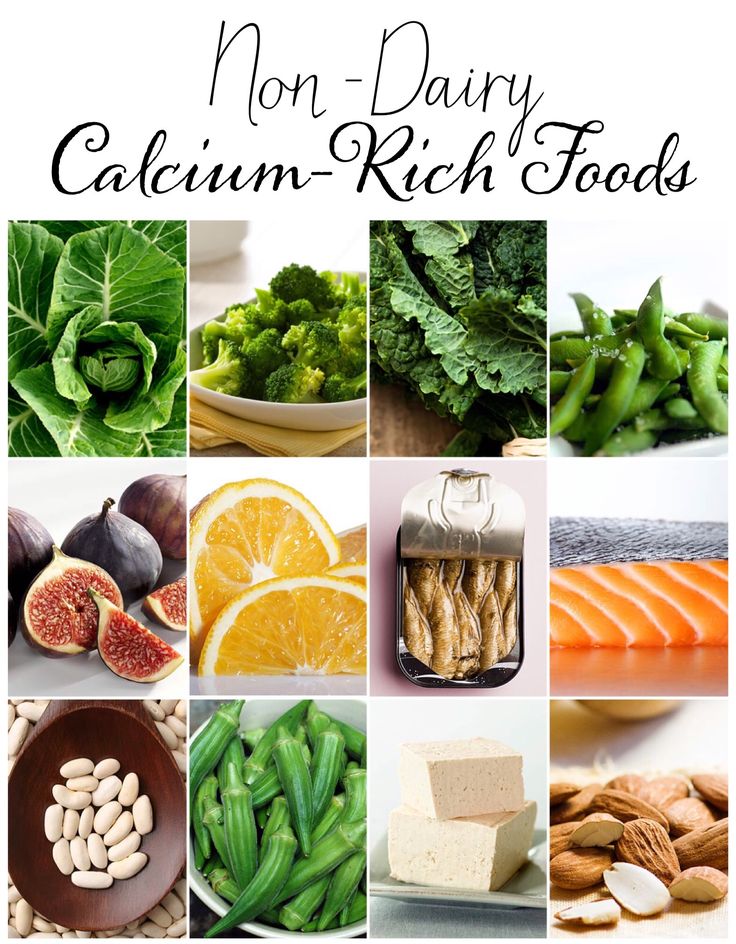 Of the total amount of calcium, 99% is found in the bones and teeth, and 1% is in the blood and soft tissues. Calcium accumulates in parallel with phosphorus in the skeleton, forming a solid foundation for all bones. In this process, these elements work in pairs, and they are also assisted by vitamin D, which regulates the sufficient absorption of calcium from the intestines and its deposition in the bones. The most intensive processes of bone growth are observed in three age groups: from birth to one year, then at 5–7 years, and finally, in adolescence. During these critical periods, the child needs calcium in sufficient quantities, and the task of parents is to ensure the supply of this important mineral.
Of the total amount of calcium, 99% is found in the bones and teeth, and 1% is in the blood and soft tissues. Calcium accumulates in parallel with phosphorus in the skeleton, forming a solid foundation for all bones. In this process, these elements work in pairs, and they are also assisted by vitamin D, which regulates the sufficient absorption of calcium from the intestines and its deposition in the bones. The most intensive processes of bone growth are observed in three age groups: from birth to one year, then at 5–7 years, and finally, in adolescence. During these critical periods, the child needs calcium in sufficient quantities, and the task of parents is to ensure the supply of this important mineral.
Permanent update
Many people believe that the human skeleton is a "stone" frame, which gradually increases its mass as it grows older and undergoes virtually no changes. This is not entirely correct. The skeleton, like any other organ, is in constant renewal. Resorption and removal of old, damaged areas of bones and the formation of new young structures occur. In childhood, this process is very intense, and the skeletal system is completely renewed in 1–2 years. The indicator of the daily amount of calcium intake directly affects the rate of linear growth and bone mineral density, determining the physical development of the child and even the long-term risks of bone fractures in old age.
In childhood, this process is very intense, and the skeletal system is completely renewed in 1–2 years. The indicator of the daily amount of calcium intake directly affects the rate of linear growth and bone mineral density, determining the physical development of the child and even the long-term risks of bone fractures in old age.
A multi-faceted macronutrient
Of course, the supporting-structural role of calcium is very important, but this is not the only benefit of the mineral. The processes and exchange reactions in which he takes part are surprisingly diverse. Calcium is one of the important components of the blood coagulation system, determining the activity of at least seven links of this multi-stage cascade. This mineral is also necessary for muscle contraction, which directly affects muscle strength, heart function, the processes of narrowing and relaxation of the walls of blood vessels, and the regulation of blood pressure.
IMPORTANT! Calcium is also important for the efficient functioning of the central nervous system, participating in the processes of excitation and transmission of nerve impulses.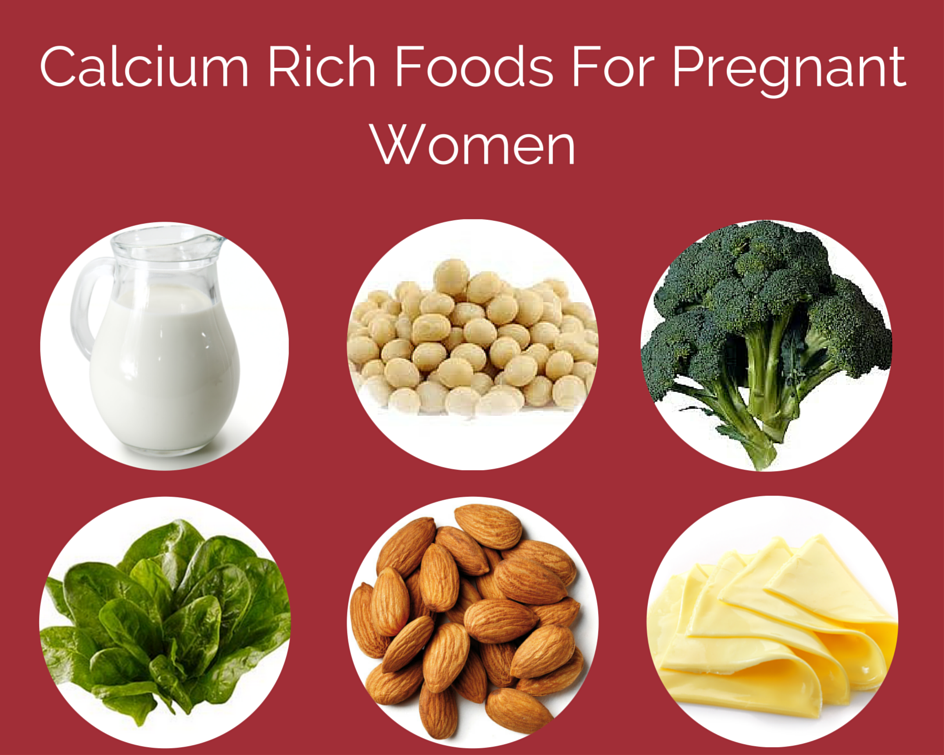 By determining the activity of a number of enzymes and hormones, it is essential for the functioning of the immune and endocrine systems. At the same time, calcium probably performs the most basic task at the level of each cell of the body: it regulates the processes of growth and differentiation, participates in the formation of intercellular bridges and connections, forming tissues and organs.
By determining the activity of a number of enzymes and hormones, it is essential for the functioning of the immune and endocrine systems. At the same time, calcium probably performs the most basic task at the level of each cell of the body: it regulates the processes of growth and differentiation, participates in the formation of intercellular bridges and connections, forming tissues and organs.
This is why the concentration of calcium in the blood, due to its importance for a large number of vital processes, is precisely regulated, and the normal range is quite narrow from 2.16 to 2.51 mmol/l. Strict maintenance of this level is extremely important. What fluctuations are allowed? Very minor - a decrease in concentration by 20% already leads to major disorders: weakening of muscle tone, increased excitability of the nervous system, and even to the development of seizures.
Deficiency states
In case of insufficient intake of calcium from food or low absorption from the intestine (for example, in case of vitamin D deficiency), the body responds with a reaction: its excretion with urine decreases and absorption of the mineral from the intestine increases to the maximum.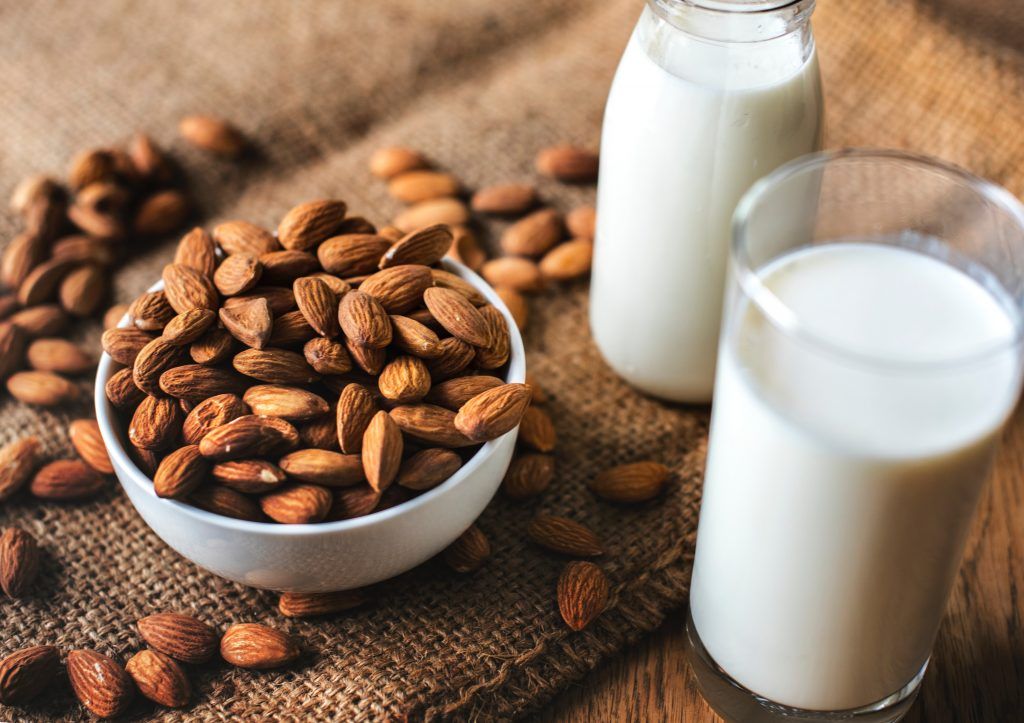 However, if these mechanisms are not enough to maintain the required level, the element is washed out of the bone structures. This leads to growth retardation, impaired bone and tooth formation.
However, if these mechanisms are not enough to maintain the required level, the element is washed out of the bone structures. This leads to growth retardation, impaired bone and tooth formation.
IMPORTANT! At an early age, calcium deficiency leads to the development of rickets. The child has a curvature of the legs and gait disturbances, deformation of the bones of the chest and limbs, a change in the bones of the skull. Characterized by late teething and frequent caries. In addition to changes in the skeletal system, clinical manifestations in the form of increased irritability, sleep disturbances, sweating, muscle weakness reflect changes in many of the most important systems of the body.
Calcium deficiency in childhood has long-term consequences, increasing the risk of osteoporosis and fractures in adults. Often insufficient intake in childhood is reflected by problems during future pregnancy, when this mineral is necessary for the fetus to form the skeleton and is actively mobilized from the dentin of the mother's teeth and bones.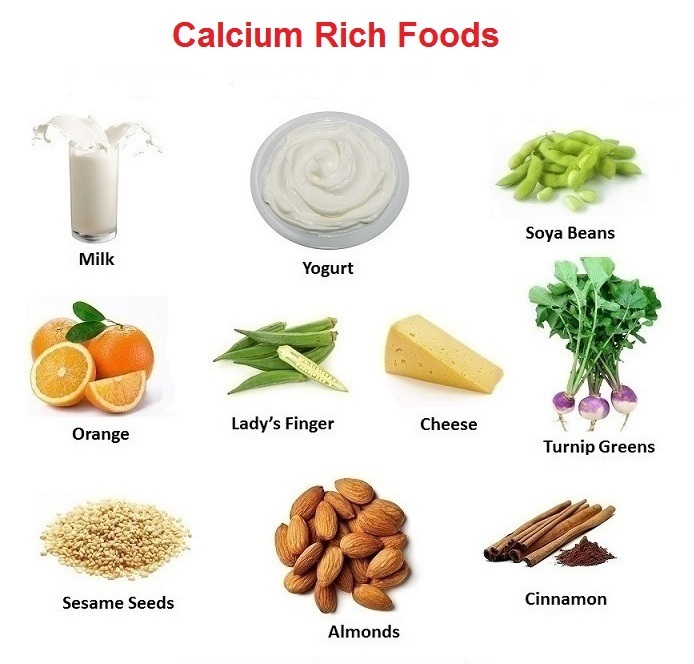
Sources of Calcium
There is no doubt about the need for a daily intake of calcium from food, especially during periods of intensive growth, when the need for it is very high. With a balanced diet, a sufficient supply of minerals and vitamin D ensures the maintenance of the required level in the blood serum, as well as proper deposition in bone tissue and teeth. In accordance with the current recommendations in the Russian Federation, all children and adolescents should receive 800-1200 mg of calcium per day. The main source of mineral intake in the body is food. Calcium is one of the most common minerals on Earth, and many foods contain it in their composition. It is present in meat, fish, vegetables, legumes, fruits and cereals. However, the listed food groups are not considered as sources of this mineral, since there is not much calcium in them (less than 100 mg / 100 g of the product), and, in addition, the percentage of assimilation is also very low (no more than 10–30%).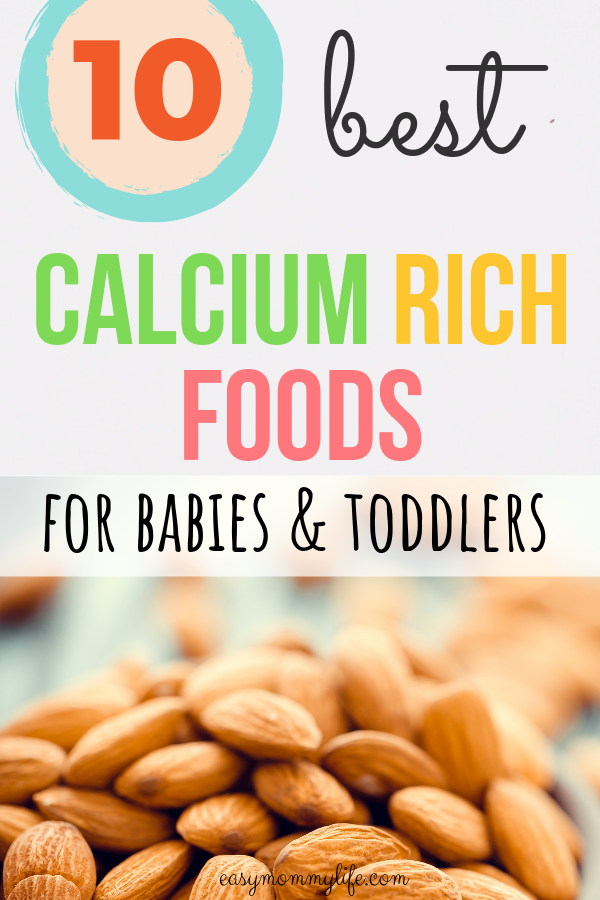
IMPORTANT! Milk and dairy products play an exceptional role in providing children and adults with this macronutrient. So, a glass of milk or natural yogurt or 40 grams of cheese contains about 300 mg of calcium. It is this food group that supplies up to 80% of the required amount of calcium and phosphorus.
A feature of dairy products is the fact that the necessary minerals are present in them in an easily digestible form, which is rarely found in other foods. The ratio between the amount of calcium and phosphorus in foods is very important, since the best absorption in the intestine is observed at a value of 2: 1. This is the content found in breast milk. In dairy products, this ratio is close to the desired one. Another benefit of this food group in calcium absorption is the presence of milk sugar. It has been proven that the presence of lactose accelerates the absorption of many minerals, including, in addition to calcium, magnesium, zinc, manganese and iron. It is impossible to consider phosphorus-calcium metabolism without taking into account the role of vitamin D, which, in fact, is the regulator of the metabolism of these minerals in the body. Therefore, calcium will be better absorbed from foods that are rich in this vitamin (fish, egg yolk, cheese, butter).
It is impossible to consider phosphorus-calcium metabolism without taking into account the role of vitamin D, which, in fact, is the regulator of the metabolism of these minerals in the body. Therefore, calcium will be better absorbed from foods that are rich in this vitamin (fish, egg yolk, cheese, butter).
Read also: The child does not want to eat meat and fish
Drink milk, children
Dairy products are the basis of nutrition in childhood. In addition to the high content of easily digestible calcium and phosphorus, it is a valuable source of protein, full in amino acid composition, milk fat, which includes essential fatty acids, as well as a number of vitamins. In the nutrition of young children, as well as in other periods of intensive growth, the daily amount of dairy products in the diet should be no less than 500 ml per day in the form of whole milk and sour-milk drinks, as well as 50 grams of cottage cheese or cheese. However, all these recommendations will be relevant only for children older than a year. The nutrition of babies in the first year of life has its own characteristics, which are associated with the restriction of the introduction of whole cow's milk.
The nutrition of babies in the first year of life has its own characteristics, which are associated with the restriction of the introduction of whole cow's milk.
Breastfeeding
Mother's milk is the main food for children in their first year of life. Its composition perfectly matches the needs of the child and changes dynamically in the process of growth and development of the baby. It is breast milk that is the main source of minerals in the first half of a baby's life. The total amount of calcium in human milk is lower than in cow's milk. But due to the ideal ratio between phosphorus and calcium, as well as the presence of special proteins that facilitate the transport of minerals through the intestinal wall, their absorption is very high. At this age of the baby, it is very important that the mother's nutrition is balanced and rational for the child to receive the necessary substances and maintain the health of the mother. In addition to the daily presence of dairy products in the menu, nursing mothers are advised to take additional calcium as part of vitamin and mineral complexes. Formula-fed infants should opt for lactose-adapted formulas for better absorption of calcium and vitamin D.
Formula-fed infants should opt for lactose-adapted formulas for better absorption of calcium and vitamin D.
Weaning time
Mother's milk can only meet the needs of the baby during the first 4–5 months of life. Then, for normal growth and harmonious development, an additional supply of nutrients, as well as vitamins and minerals, is necessary. In the second half of life, complementary foods become a source of calcium. In accordance with modern domestic recommendations for feeding children, it is necessary to avoid the use of whole cow's milk until the age of 1 year. This is associated with a high risk of developing allergic reactions to a foreign protein, in addition, the load on the baby's immature kidneys increases and there is a risk of damage to the cells of the intestinal mucosa. At this age, the introduction of whole milk can cause a violation of iron absorption in the gastrointestinal tract, the need for which increases significantly in the second half of life.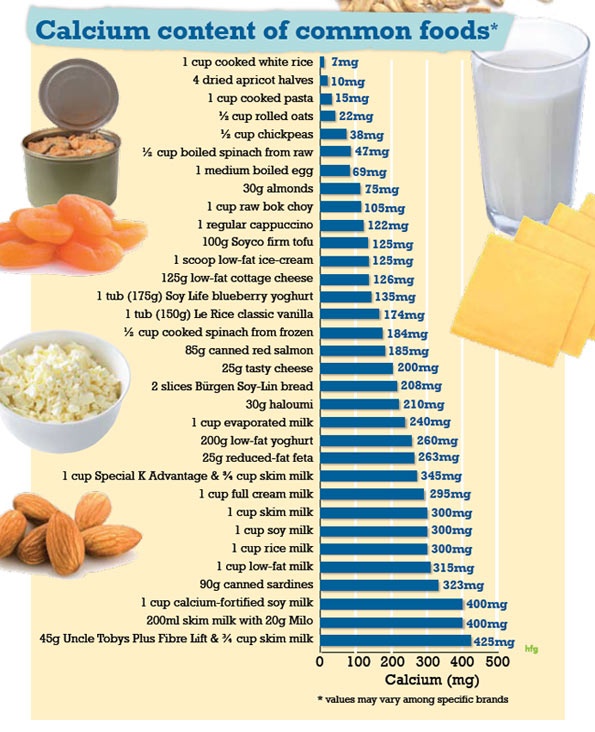 In this regard, specially prepared and adapted dairy products are used in the nutrition of children of this age.
In this regard, specially prepared and adapted dairy products are used in the nutrition of children of this age.
Complementary cereals
Babies older than 4–5 months receive calcium and phosphorus from specialized industrial products — baby milk porridge. For example, for the production of cereals of the Bebi Premium line, milk is used, which is specially adapted for better absorption by the child's body. Milk for the products of this manufacturer is delivered from Danish dairy farms, recognized as the best in the world. The milk component is the highest in comparison with children's cereals of other brands and does not contain vegetable oils. The latter aspect is also very important in the matter of calcium absorption. Palmitic and stearic fatty acids, which are part of a number of vegetable oils, bind to calcium to form insoluble compounds, thereby preventing its absorption.
IMPORTANT! All products of the Bebi Premium line are enriched with a vitamin-mineral premix, which is qualitatively and quantitatively specially selected for better absorption of calcium. Thus, the necessary intake of the mineral is made up of the natural content in cereals and the milk component, as well as due to the additional enrichment of porridge with calcium and vitamin D.
Thus, the necessary intake of the mineral is made up of the natural content in cereals and the milk component, as well as due to the additional enrichment of porridge with calcium and vitamin D.
This allows you to make a significant contribution to the daily need of the child for these essential substances.
Sour-milk products
At the age of more than 6 months, the baby's diet can be supplemented with cottage cheese, and after 8 months with sour-milk drinks. These foods are also a source of easily digestible calcium. In the nutrition of children of the first year of life, first of all, specialized products based on cow and goat milk should be used - liquid (biolact, yogurt, kefir) and pasty (children's cottage cheese).
IMPORTANT! In these complementary foods, protein and milk sugar are partially broken down, improving digestibility and reducing the risk of allergies, kidney damage, and iron loss compared to whole cow's milk.
However, it must be remembered that the daily intake of these products should be limited in volume and not exceed 200 ml for drinks and 50 grams for baby cottage cheese.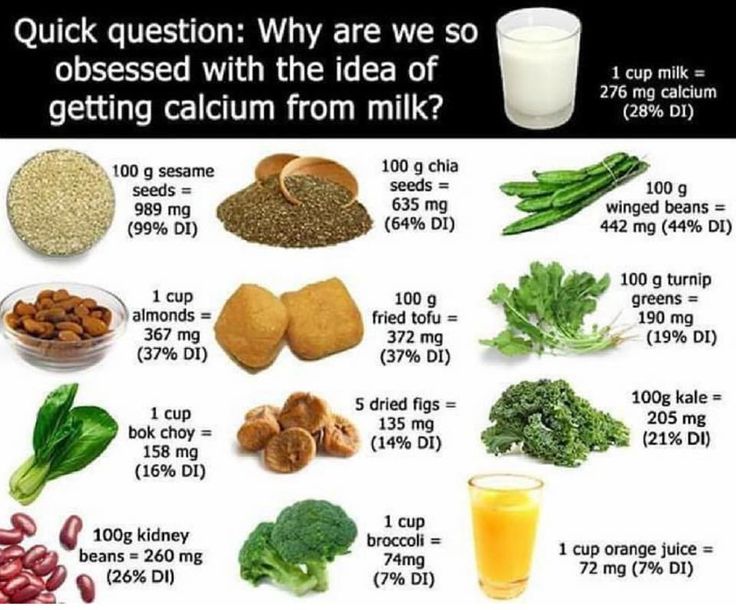 The use in large quantities can irritate the mucous membrane of the gastrointestinal tract, increase the load on the kidneys, cause colic, frequent and loose stools, and disrupt the absorption of iron. Among the large selection of fermented milk drinks, it is recommended to give preference to products that are prepared using probiotic cultures approved for use in babies.
The use in large quantities can irritate the mucous membrane of the gastrointestinal tract, increase the load on the kidneys, cause colic, frequent and loose stools, and disrupt the absorption of iron. Among the large selection of fermented milk drinks, it is recommended to give preference to products that are prepared using probiotic cultures approved for use in babies.
Which foods with calcium are best for a child?
18 August 2020
8 February 2021
4 minutes
10093
ProWellness
Contents
- Benefits of calcium for the child's body
- How to understand that a child lacks calcium?
- What calcium foods can I give my child?
Disclaimer
Please note that all information posted on the site Prowellness is provided for informational purposes only and is not a personal program, a direct recommendation for action, or medical advice. Do not use these materials for diagnosis, treatment, or any medical procedure. Consult your physician before using any technique or using any product. This site is not a specialized medical portal and does not replace the professional advice of a specialist. The Site Owner is not liable to any party who has suffered indirect or direct damage as a result of misuse of materials posted on this resource.
Do not use these materials for diagnosis, treatment, or any medical procedure. Consult your physician before using any technique or using any product. This site is not a specialized medical portal and does not replace the professional advice of a specialist. The Site Owner is not liable to any party who has suffered indirect or direct damage as a result of misuse of materials posted on this resource.
Which foods with calcium are best for a child?
Calcium is one of the most important trace elements that provides a person with health and a comfortable existence. It is especially important for a growing organism. What foods with calcium can be given to a child?
Benefits of calcium for children
Why calcium is good for baby's health:
- ensures normal growth and development of the baby;
- correctly forms the bone skeleton;
- reduces the risk of developing rickets;
- improves the condition of teeth and tooth enamel;
- reduces the risk of caries;
- has a positive effect on the condition of hair, nails, skin;
- has a positive effect on the nervous system and the transmission of nerve impulses;
- strengthens nerve tissues;
- increases the body's defenses;
- reduces the risk of developing allergies;
- strengthens the cardiovascular system, has a positive effect on its work;
- helps develop memory, attention, mental abilities;
- provides the child with vigor and strength;
- helps to cope with stress factors.
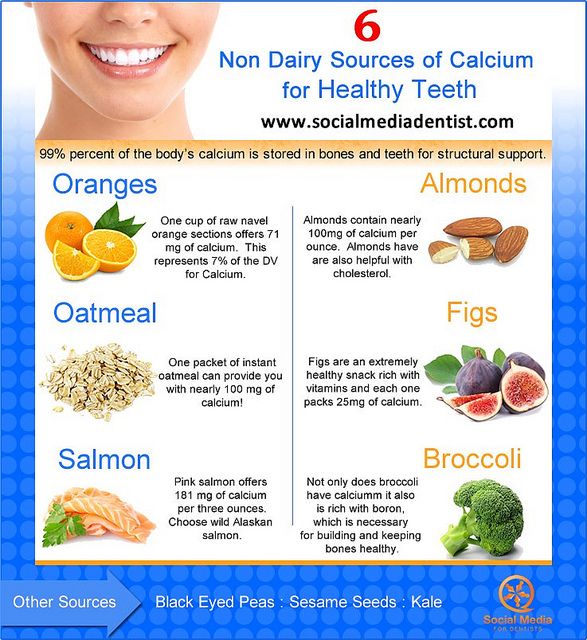
How can you tell if your child is lacking calcium?
You can suspect a lack of calcium in a child's body by the following symptoms:
- The child grows slowly, gains weight poorly, lags behind his peers in physical development.
- His nails are constantly breaking, exfoliating, with visible white stripes on them.
- Dental diseases often occur.
- Hair grows slowly and falls out frequently.
- The child behaves irritably, aggressively.
- Gets tired quickly, lacks energy.
- The child has convulsions.
What calcium foods can I give my child?
List of foods with calcium that will be good for the child:
- Hard cheese. Parmesan is the record holder for calcium content. It will help beneficial substances to be better absorbed in the intestines of the child.

- White beans. Contains a lot of magnesium, and this has a double beneficial effect on the bones.
- Milk and dairy products. The child can be given milk, cottage cheese, kefir, natural yogurt, fermented baked milk. The main thing is not to add sugar to them, otherwise calcium will be absorbed worse.
- Almonds and hazelnuts. Nuts have a lot of calcium, but they are high in calories, they should not be overeaten. It is very important for an adult to monitor the condition of the child after taking nuts. They can cause allergies.
- Pumpkin and sesame seeds. Usually children eat seeds with pleasure, but if the crumb refuses them, then seeds can be added to salads and main dishes, homemade cakes.
- All types of cabbage. Especially useful for children is broccoli, as it does not cause digestive problems and allergies.
- Sardines. They are good for bones, but you should be careful with canned food, as they should not be given to children in large quantities.
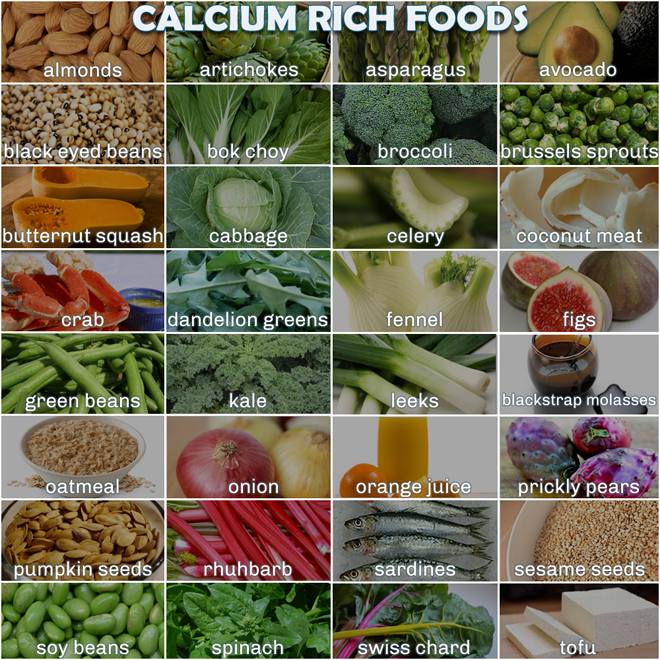
- Oily sea fish. Particularly useful for the baby are red fish and tuna.
- Olive oil. It is worth completely replacing them with sunflower. Suitable for frying and salad dressing.
- Fresh herbs. Most calcium is found in dill, parsley, spinach, sorrel. Greens should be added to salads or simply offered to the child to chew on a bunch.
- Oranges. They can be eaten in their pure form, or you can make juices, fresh juices, desserts from them, add them to pastries.
- Dried figs. Great alternative to sweets.
- Bananas. They do not contain the daily norm of calcium, but they contain potassium, which prevents the leaching of nutrients from the body.
Attention! Foods with calcium should be in the diet of any healthy person, especially a child, as a growing body needs support.
Disclaimer
Please note that all information posted on the site Prowellness is provided for informational purposes only and is not a personal program, a direct recommendation for action, or medical advice.